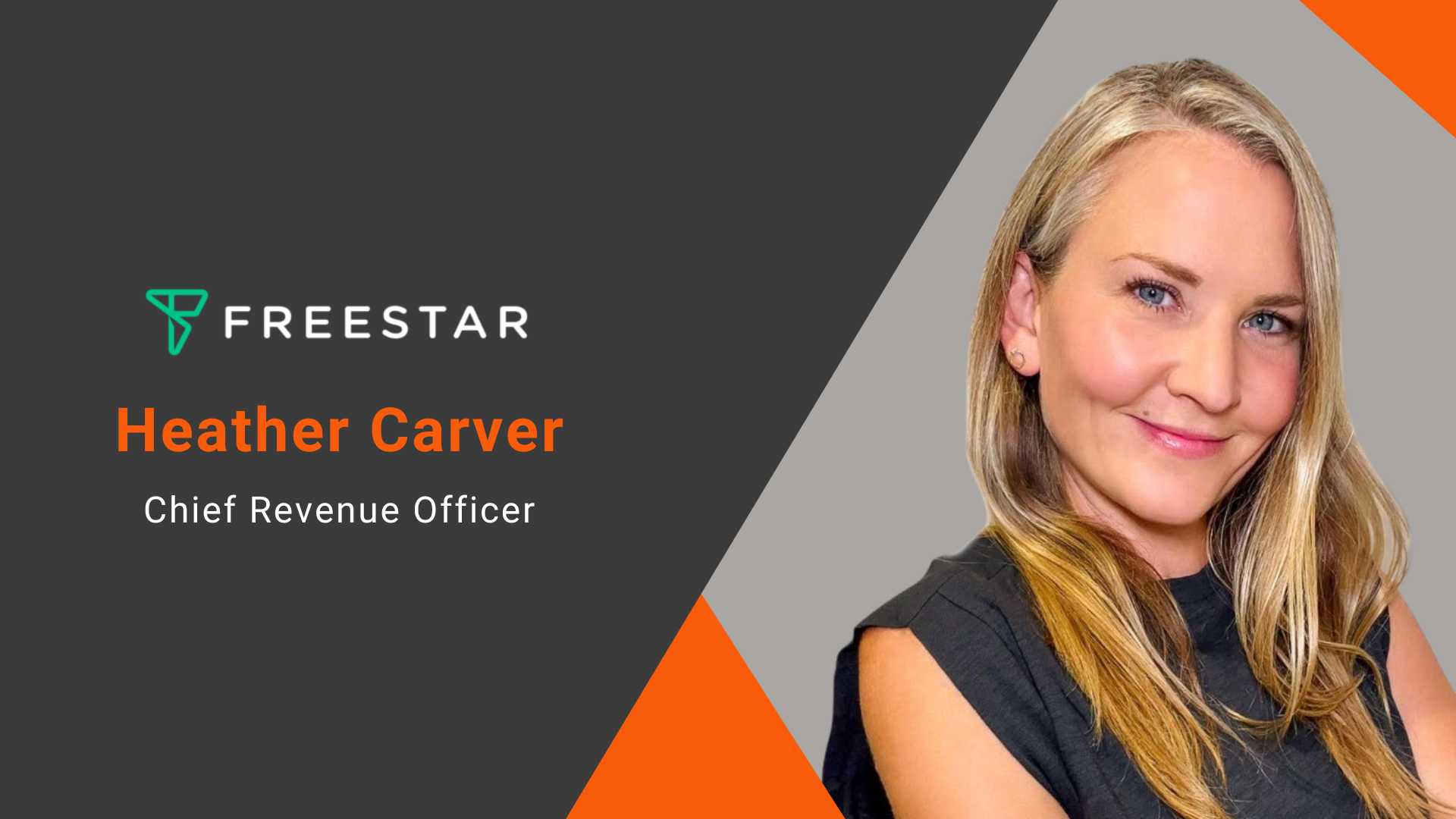
data management
Bryan on Data, AI & the Future of Marketing
data management 10 Sep 2025
Enterprises must approach marketing technology adoption with privacy-first design as a foundational principle. Trust with customers is paramount, and without it, no advantage gained from marketing will make up for loss of trust. While enterprises do need to create the right internal policies and governance for marketing teams around how they should use AI-powered resources or generated content (including navigating the complexities of external regulatory requirements for data privacy), they can also integrate tools that are tailored to align with security needs. Databricks’ Data Intelligence for Marketing integrates Unity Catalog’s centralized governance and security with privacy and consent management — partnering with OneTrust — to ensure data is collected, unified, and activated responsibly with full respect for customer consent. This approach helps turn privacy from a compliance burden into a competitive advantage, helping enable personalized experiences at scale without sacrificing customer trust or regulatory compliance.
Regardless of technical skill, the need for marketers to access real-time data is important to effectively respond to changing customer behavior and broader market dynamics. The time it takes to go from event to insight to action can mean the difference between an engaged or churned customer. Databricks empowers marketers of all technical skill levels through self-serve access to real-time insights using AI/BI Genie. Often, insights happen on the front line, but decisions happen at a leadership level. Self-serve access to insights can empower front line marketers to make more informed decisions, while leadership can more closely track progress and thereby give more independent decision making power to front line marketers. As a result, we see Databricks enabling both technical and non-technical marketers to make data-driven decisions, optimize campaigns in-flight, and personalize customer journeys effectively.
When marketers operate from a single source of truth that unifies customer and campaign data, the operational efficiencies are transformative. An integrated marketing data platform can break down silos across disparate systems, such as CRM, ad platforms, analytics, and content management, to enable consistent metrics and identifiers across channels. This unified data foundation eliminates delays caused by fragmented or inconsistent data, allowing marketers to trace and optimize customer journeys end-to-end with confidence. For example, since utilizing the Data Intelligence Platform, HSBC has seen a rapid increase in the speed at which they have data available for analysis, and has a number of jobs that used to take 6 hours and now take only 6 seconds.
One of the most critical challenges for marketers is getting a complete view of their customers and campaigns, because their data is scattered across different systems–and fragmented data leads to incomplete insights and reactive marketing. Building from a unified customer and campaign source of truth is no longer a nice to have, but necessary to compete and win in today’s data-driven business environment. Databricks unifies disparate data sources into a single source of truth, and then seamlessly integrates out-of-the-box with leading martech providers to empower marketers to deliver consistent, personalized experiences and measure campaign effectiveness with clarity and confidence.
Ultimately, any improvement seen in key metrics like click-through rates, cost-per-click, and return on ad spend help to directly validate the value of marketing data solutions. When organizations see tangible performance gains driven by data intelligence—enabled by real-time insights and AI-powered personalization—they are more likely to increase investment in these platforms to sustain competitive advantage and maximize marketing ROI. For example, Databricks’ customer Sketchers has used the new access to data insights they’ve gained to create personalized customer journeys, enhancing their ability to engage customers and achieve higher customer lifetime value. They’ve seen a 324% increase in click-through rates, a 68% decrease in cost-per-click, and a 28% increase in return on ad spend.
Over the next 3-5 years, we believe data intelligence will evolve from a supporting function to the core driver of marketing strategy across B2B and B2C organizations. Advances in AI automation, real-time and conversational analytics, and privacy-first data governance will enable marketers to anticipate customer needs, truly personalize experiences at scale, and orchestrate seamless omnichannel journeys. At Databricks, we believe in a future where marketing decisions are data-informed, privacy-compliant, and can automatically adapt to changes in customer behavior.
Medal SVP on Gaming Clips, FAST Channels & Creator Monetization
data management 18 Jul 2025
1. What role do you see FAST channels playing in your overall content distribution and monetization strategy?
a. People spend more time watching others play games than actually playing those games.
b. Medal users consumed more than 3B hours of game clip content on Medal’s social clipping platform. Billions of hours were consumed off platform when those clips were shared to Discord, video platforms, and other social networks. There’s clearly interest and demand for short form video game content for which Medal has cornered the market.
c. Syndicating this content to gaming FAST channels provides another outlet for gamers to connect to relevant gaming clips.
2. How is your company capitalizing on the convergence of traditional publishing, digital video, and OTT to create integrated media ecosystems?
a. Right now, our goal is to expand the number of people capturing and sharing their in-game memories with their friends on and off Medal and providing the best possible platform to both capture those moments and share them with those you actually care about. We’re not building a platform to make you famous. We’re building a platform to save memories that happen in the 3rd-space which is gaming for so many of us.
3. What frameworks or criteria do you use to evaluate the success and ROI of creator partnerships within your content strategy?
a. From a marketing perspective, we’ve worked with a lot of creators in the past and it’s a viable channel though I’m happy to share some hot takes if you’d like. From a product perspective, a creator program isn’t a near-term focus namely because Medal is more of a Snapchat-like experience. You share your in-game memories with those you play with and those that you have a connection with. Some people want to make these very public, and we’re happy to facilitate that however the majority of our users share within their circle of friends off platform - in places like group chats, discord etc. and they are doing it on average 7x a day. It's in those more intimate communities that GenZ has the most influence amongst their peers and Medal is now giving advertising access to these typically hard to reach moments of engagement.
4. In the age of fragmented media consumption, how are you aligning content formats and experiences across mobile, social, and digital to meet changing audience behaviors?
a. Niche social platforms are the future. The one-size-fits-all solution that most other social media provides–the competitive algorithm, the horrendous signal:noise ratio, the constant race to the bottom–sucks. Full stop. Medal is a platform for you and the people you spend time playing games with – a lot of time. Medal users spend 23 hours/week playing games. That’s a lot of time hanging out with friends in digital worlds. That’s a lot of time having core social experiences online, with no way to document, capture, and share like we have with our iphones in the real world. We’ve built that iphone for digital memories. For ephemeral experiences, the reception seems to be a resounding “hell yes” from our users. So it’s less about adjusting for the changing landscape and user behavior and more so building the landscape and creating the behavior change.
5. How do you balance short-term monetization goals with long-term audience and brand equity when scaling new digital products or channels?
a. Because Medal’s core brand promise is to connect gamers through their shared in-game experiences, we prioritize product quality above everything else. If our recorder fails and you miss that moment your friend said something silly or you and your friends finally cleared that impossible dungeon or beat that crazy hard boss, we’ve failed as a product. As a corollary, we prioritize user experience over monetization especially when it comes to ads. Our ads products are a combination of standard IAB formats of which we have only a few and Bounties, a deeply integrated, interactive ads product consisting of clip contests, rewarded in-game actions, and various clip creation and sharing-based activations. Ad saturation is something we want to avoid. It’s bad for users and it’s bad for advertisers. We also never show ads while the player is in-game, has Medal covered, minimized, or is AFK. Ad fraud is unfortunately rampant and we want no part in it. Building strong brand equity both in the gaming industry among players and in the media industry among advertisers is a tricky needle to thread but I think we’ve done a good job thus far.
Get in touch with our MarTech Experts.
Why Opt-Out Failures Are a Growing Privacy Liability
data management 10 Jul 2025
1. How critical is it for organizations to detect and address data collection activity that occurs after a user opts out?
It's mission critical. If businesses can record a consumer opt-out of data sharing or selling but fail to stop firing tags and trackers according to that consumer’s wishes, are consumer preferences really being respected? Certainly not.
Ketch Data Sentry validates consent propagation across your full AdTech stack to ensure no blind spots. Our autonomous AI agents emulate user behavior in-browser to confirm IAB strings are intact and Global Privacy Control (GPC) signals are enforced. Data Sentry acts as a compliance auditor, showing which tags and trackers are rogue actors – intentionally or otherwise – so your team can intervene before a regulator does.
It's the difference between driving blindfolded and navigating with GPS. Ketch Data Sentry is a real-time privacy pentest for all of your digital properties. It reveals what data leaves your site, where it goes, and whether it should be going there.
Most privacy teams assume their consent management platform (CMP) is doing the job, but that assumption often doesn’t hold up under scrutiny. The issue isn’t bad intent – it’s that many CMPs simply weren’t built to validate whether opt-outs actually suppress tag and tracker activity in real-time. They can collect consent, but are weak at enforcing consent preferences across a modern website’s complex tag and tracker ecosystem.
Without question. Most organizations rely on their CMPs, maybe add a cookie scanner or code audit, and assume they’re covered. But those tools don’t validate whether consent is actually respected – they just skim the surface.
Ampersand’s Advanced TV Data Strategy: Driving Cross-Platform Reach & Sports Sponsorship Innovation
data management 2 Jul 2025
1. What role does advertising play in your current media strategy, and how are you scaling it to reach cross-platform audiences effectively?
Ampersand helps advertisers reach and measure audiences at scale, across 63 million households, with data-informed media plans designed to reach a brand’s key audience in ad-supported linear, streaming and on-demand video content. We tend to see very impactful media performance when multiple platforms are layered into a media plan. For example, a recent campaign targeting the same strategic audience on traditional and addressable media, saw great success and reached 89% of its strategic audience while also driving a +21% lift in website visits.
First, having a clear definition of success for an advertiser and alignment on success indicators are crucial to provide meaningful insight on a campaign’s effectiveness. Ampersand has a suite of measurement capabilities that enable measurement of advertising performance across the marketing funnel in a unified fashion so that brands gain a deeper understanding of a campaign’s effectiveness, what’s working (or not working) and how to optimize for the next campaign.
Ampersand leverages its access to over 14,000 live sporting events annually—including marquee events like the NFL, NBA, NHL, and March Madness—to help brands connect with sports fans at their most engaged moments. Unlike costly national or league-level sponsorships, Ampersand enables advertisers to align with major events and passionate fanbases in a more cost-effective, targeted way—delivering the same brand association and impact without the premium price tag.
Through our proprietary AND Platform, we enhance this reach with powerful audience intelligence. By analyzing sports viewer segments and behavioral data, we help advertisers target specific audiences based on how, when, and what they watch—before, during, and after the game. This ensures campaigns are not only seen but resonate with the right consumers at the right time, driving more meaningful and measurable results.
Ampersand is lowering the barriers to entry for sports advertising, offering scalable solutions that suit a range of budgets. This opens the door for smaller brands to participate in sports marketing, which has traditionally been dominated by larger players. By providing targeted, localized access to sports content, Ampersand offers a more cost-effective way for brands to align with sports without the hefty price tag of national or league-wide deals.
The ability to action off data that is derived from a variety of sources, but also translatable back to an anonymized household identifier is a complicated issue, but having that flexibility is critical to being able to execute a holistic advertising strategy. Ampersand overcomes this challenge by using identity graphs that enable consistent and privacy safe deterministic household level addressable targeting across linear, on demand and streaming media.
National and local/regional efforts should complement one another rather than compete. We have seen geographically targeted advertising fill in many of the audience targeting gaps and optimal frequency goals that are needed to make a positive impact on kpis. Recently Ampersand worked with a brand to design a campaign including traditional local linear and addressable inventory in specific geographies. The brand reached more of their strategic audience with local linear and addressable versus their traditional national linear buy (+19% and +12% respectively) and saw a +25% increase in conversion.
MarTech Edge Interview with Darren Cunningham, VP Marketing, Komprise
data management 28 Sep 2023
You have been a successful marketer before joining Komprise as the VP Marketing. What three key takeaways from your marketing journey still influence your current role?
1. Mentorship. I was fortunate early in my career to work in a marketing organization run by a leader who was passionate about the art and science of B2B marketing, the importance of aligning closely with sales, and the need to build strong relationships. (In fact, I would encourage other marketers to subscribe to Dave Kellogg’s blog: https://kellblog.com/). Be open to being mentored and look for ways to mentor others along the way.
2. Know where you’re best. For most, the career path is not a straight line to the top. Early in your career, there are benefits to working at a bigger company. You may have a narrower focus, but you’ll get more training and meet a lot of people. If you’re okay with less process, lower budgets, and higher risk, find a start-up that may need you to wear more hats and broaden your skillset. Don’t be afraid to try new things and move around until you’ve figured out where you do your best work and can have the most impact.
3. Network well. Very much related to points one and two, I’ve been lucky to work with a lot of great people in my career and have tried to stay in touch on the professional and personal level with many. Take the time to go for coffee, have lunch with people on other teams, participate in social events, and build real relationships.
How does Komprise Hypertransfer facilitate a seamless and swift data transfer while ensuring data quality stays intact?
Komprise Hypertransfer for Elastic Data Migration allows 25x faster cloud data migrations across high latency WAN connections compared with common industry tools. Large-scale data migrations to the cloud, especially concerning small files, can take weeks, if not months. Hypertransfer achieves these performance gains by minimizing the frequent WAN roundtrips that occur with small files, using dedicated channels to send data. The technology also leverages the capabilities of the Komprise Elastic Data Migration solution to minimize data loss and conduct automatic retries if a network connection goes down. Komprise Hypertransfer also strengthens security and defense against ransomware by not accessing cloud file storage over the network during data migrations since data transfers from source to target over private channels. So our customers get much faster migrations, with lower risk overall, and that’s a great proposition for large enterprises that want to accelerate their cloud journeys.
How do you adapt your global campaigns to the specific needs and interests of different segments of your audience?
When I worked in larger marketing organizations, there would be centralized marketing campaigns that different countries, regions, industries, or overlay teams could choose to run and customize. The model that works best is when these teams have the autonomy to make the changes they need to be relevant to their audience without changing the overall brand message. This ensures a level of consistency across segments. When you’re working at a smaller company, it’s all about regional sales and experimentation until you find the right messages that work with different segments. Smaller companies with a single product may only have one or two segments, so the challenge is ensuring that your message is spot-on for users and decision-makers and that your differentiation is clear. I’ve found that regardless of company size and stage, the key is to have open communication with frontline sales teams and transparent strategies to measure effectiveness across segments.
How does Komprise help marketers access and use their unstructured data to their full potential without relying on IT support?
Self-service data management is the hot trend these days, as IT is overburdened with high-priority cloud, AI, and revenue-generating projects to support the larger organization. Ensuring that data owners can see their files and understand their data usage, always easily access their data even after it has been migrated to new storage or archived, and use data easily in the cloud are priorities of our company. Komprise allows IT to grant read-only access to departmental users so that they can search for files, tag data for research purposes, and identify data that should be moved to a new location (such as a cloud data lake) or deleted altogether to save money and space. Komprise ensures that IT has full control so that business users don’t have the ability to execute actions that could inadvertently delete the wrong data or move data to a non-compliant location. User input allows IT to set up automated workflows for data management to save time and meet departmental needs.
What pivotal shifts did you bring about that led to elevated brand awareness, better leads, and increased revenue for Komprise?
When you join any company, you first need to assess what’s working and what’s not and how the team is functioning. At Komprise, we already had some great customers and a fully developed product when I joined. We had strong alliance partnerships with major tech vendors in place. The new CRO, whom I had worked with at a previous company, was in the midst of making changes to the sales, channel, and outbound business development teams. My background is in product marketing, so the first thing we worked on was to ensure our sales team had a clear value proposition. Tightening this up (with lots of cross-team collaboration) led to a messaging framework that we applied to our website and campaigns. It was clear early on that it wasn’t just the company that needed more awareness but the problem we were solving: the cost and complexity of managing massive unstructured data growth and the growing need to harness this data for new business value. We brought on a communications leader, whom I had also worked with in the past, who could help us tell that story and drive the creation of the category of unstructured data management. Focusing on the problem and clarifying our differentiated approach to helping customers address has been essential to our success.
How is Komprise working on the next big thing in data management, and what kind of breakthroughs can we expect from it?
It’s a fascinating time in this growing market. Three trends are really driving innovation in unstructured data management and are a focus of the company today and moving forward:
1. AI is powered by unstructured data, so finding ways to harness your growing volumes of data and feed only the right data to AI engines and new analytics initiatives is essential.
2. Empowering departmental users to access and manage their data with the required level of enterprise IT governance saves valuable time for IT while ensuring that teams can move fast and get what they need when they need it.
3. Hybrid cloud and edge computing are changing how data is stored and managed. Unstructured data management solutions need to work effectively across silos and deliver great user experiences, better cost economics, and the means to generate new value from hidden and underutilized data assets. Komprise is a fundamentally new approach for managing data in today’s age of hybrid cloud storage.
What key marketing goals do you want to achieve for Komprise in the next two years that would take the company to a whole new level?
Of course, we always have to hit our pipeline goals. As we build out our sales teams and scale out, we need to ensure we have the right strategies in place to ensure they can hit their numbers. This will take a combination of hiring at the right time and expanding our product line to address new use cases as the category of unstructured data management matures. On that point, it would be great to see more industry analysts recognize the category and develop magic quadrants and waves to help customers understand the different solutions available, and it would be great to see Komprise way out in front. We have specific goals around customer adoption and measurable impact. I’d love to see a Komprise global user conference, regional user groups, and other community initiatives where our customers are able to share their results and be at the forefront of our marketing strategy. I’ve always admired companies like Salesforce that do an excellent job of marketing the art of the possible and establishing forums for their customers to network and share.
Page 1 of 1
Most Recent
Transforming Marketing into a Growth Engine
Interview Of : Alexandra B. Mazzi
AI Search Optimization Can't Wait: Why Marketers Must Adapt Now
Interview Of : Laurie Naspe
The Rise of Agentic AI: How MetadataONE Is Transforming the Entire GTM Workflow
Interview Of : Lisa Sharapata
How Freestar and Audigent are Powering Future-Proof Publisher Demand
Interview Of : Heather Carver
BDR-as-a-Service: Driving Global B2B Sales Success
Interview Of : Dee Blohm
Weathering the Drought: Marketing Strategies to Survive a Dry Spell in Business
Interview Of : Trisha Gallagher















